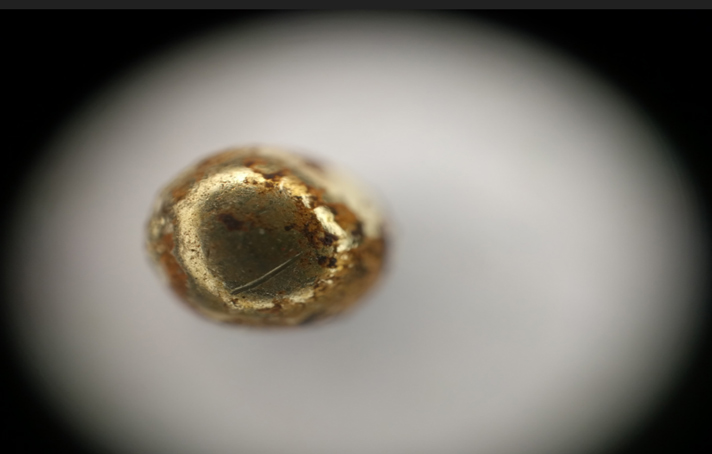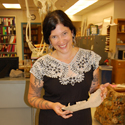Digging Jacksonville – December 2016/January 2017
“Have you found any gold yet?” That is one of the most common questions archaeologists get, particularly when working in a gold rush era mecca like Jacksonville, Oregon. While I usually say no—and silently contemplate turning it into a teaching moment regarding how the real “gold” is the information we gather about the past—for the first time I can officially report, yes. We found gold!
The main street nugget was found in the Chinese Quarter and comes from the excavations we did into the burned house in 2013. While this might be a huge find, it is in fact smaller than a sesame seed. The nugget was found within a soil sample we sent to a specialist at the University of Massachusetts, Boston for analysis on the plant remains within the historic household. In order to identify seeds and small plant matter, soil samples go through a process called flotation, where water is used to separate out organic material from clay, sand, and other sediments. This process is actually not too far off from the historic gold panning methods—in more ways than one… see teaching moment above—and resulted in the identification of the teeny golden nugget.
Oral histories abound about the inefficiencies of relying on gold as a currency: merchants needed to test the dust with chemicals to make sure it was not fake, scales could be rigged to swindle customers by under-reporting the weight (the little cabin in Gold Hill’s House of Mystery claims to have been an assayers office that once took advantage of its mysterious forces to cheat customers), and carrying around pouches of loose gold flakes and nuggets would often lead to small amounts being dropped or spilled. Most historic buildings in Jacksonville no doubt have gold dust trapped deep in the floorboards!
It was gold that led to the creation of Table Rock City, it was gold that built Jacksonville, and it is gold that will sustain it. While the shiny nuggets make for a fun story, they do not carry the weight of our historic buildings, archaeological sites, and shared heritage. With the failure of Local History measure 15-164, it is even more important that we recognize the gold all around us, and do what we can to ensure it will be here for future generations to enjoy. You didn’t seriously think you were going to get through this without that teaching moment, did you?

 Chelsea Rose is an historical archaeologist who specializes in the settlement and development of the American West. Chelsea and the Southern Oregon University Laboratory of Anthropology (SOULA) conduct archaeology across Oregon and have done several projects in Jacksonville. You can reach Chelsea at rosec@sou.edu and follow SOULA on
Chelsea Rose is an historical archaeologist who specializes in the settlement and development of the American West. Chelsea and the Southern Oregon University Laboratory of Anthropology (SOULA) conduct archaeology across Oregon and have done several projects in Jacksonville. You can reach Chelsea at rosec@sou.edu and follow SOULA on